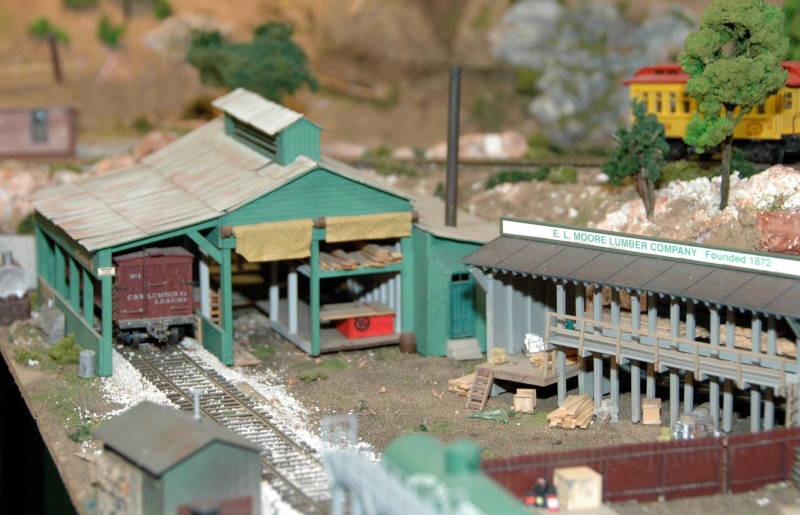Imagine our surprise and delight when we happened upon this June blog post referencing the El Moore development in, of all places, a model railroad building blog called 30 Squares.
What, we wondered, does model railroad building have to do with our sustainable rehab of a historic Detroit apartment building? It turns out that the answer’s all in the name.
Our railroad blogger mentions that he found out about the El Moore when searching for someone named “E.L. Moore.” I did a little searching on that name myself and found the following, written by the same blogger in a post from last August:
E. L. Moore was one of the most prolific writers in the model railroading press in the mid 20th century. Although he wrote on a number of model railroading topics, his specialty was articles on how to scratch-build model buildings…. His first article about constructing model buildings appeared in the July 1955 issue of Railroad Model Craftsman. In the 1960s and 1970s – the mid and late periods of his career – Mr. Moore published 59 articles in Railroad Model Craftsman, 30 in Model Railroader, along with 5 in Railroad Modeler….For most, if not all, of the articles he wrote, as well as writing the text he designed and built the model in question, took the photographs, and drew the accompanying plans. His output tapered off throughout the late ‘70s, and his last article, A firecracker factory, was published posthumously in the July 1980 issue of Railroad Model Craftsman.
This post on yet another model railroad site describes E.L. Moore as “elderly gentleman who lived in a small apartment…[and who] loved to create quirky structures for friends and write articles about them….His articles always assumed that one could assemble an attractive building for only one or two dollars, and he was an expert in working with inexpensive materials.”

A multi-talented dude with a do-it-yourself ethic, a passion for building, and an inclination to document and share his work with a community of the like-minded? I don’t think it’s much of a stretch to see an intriguing parallel between the work of Mr. E.L. Moore and our work rebuilding and telling the story of the El Moore in Detroit. And we’d never have known about this fascinating man, the rich subculture he’s part of, or this delightfully left-field coincidence if not for a friendly blogger mentioning us in his post. As word about the El Moore reaches more and more people, I can’t wait to see how their stories will continue to connect with and enrich our own.
